Content
- 1 Features of growing at home
- 2 Indoor flowers from seeds
- 3 Buy a ready-made bush or grow from a seed - that is the question!
- 4 Which crops are best planted with seeds - choose among many
- 5 How to properly prepare seeds for sowing - the first chores
- 6 When and how best to plant crops - the basics of floriculture
- 7 How to get an indoor flower from seeds?
- 8 Which plants reproduce by seed?
- 9 Do I need to process houseplant seeds?
Plants make our home more comfortable and beautiful. Someone chooses the easier way and buys flowers in the store, while someone stops at the more laborious growing of indoor plants from seeds. Consider what flowers can be grown in this way at home.
Features of growing at home
Sowing of most indoor flowers is carried out in the spring. The favorable period for planting is usually indicated on the seed package.
When choosing a pot from under another plant, do not forget to process the container
What kind containers are suitable for sowing:
- plastic or polystyrene pots;
- clay pots;
- boxes with square or round cells of different sizes;
- peat cups for seedlings.
If you use containers that were already in use, they should be well treated with soda solution and soap before planting. This is necessary, since tender seedlings can become infected with various fungal diseases (rot, mold).
In any container, before planting at the bottom, you must do hole for draining excess moisture.
The choice of soil is at your discretion. You can purchase a special plant mix or make your own. For cooking, mix one part of peat chips, one part of sand and two parts of sifted earth from the garden.
Before filling the container with earth, drainage should be made from pebbles, clay shards, expanded clay, polystyrene, pieces of red brick.
Next, fill the containers with soil mixture to a height of 1.5 - 2 cm from the edgepressing it down a little. Distribute the seeds evenly and not very densely from above. If the seeds are small, then they can be mixed with sand and distributed over the container.
Choose a ready-made substrate or prepare it yourself - it is not important for a flower, if all proportions are observed
We do not cover small seeds with earth, but press a little into it. Cover larger seeds with a thin layer of earthen mixture, then press down a little.
It is advisable to water with a spray bottle or a watering can with a fine "rain". Second option - for watering, place the pot in a shallow container of water for a couple of hours to moisten the soil through the drainage holes.
After watering, it is recommended to close the pot with a transparent plastic lid or glass to create a greenhouse effect. You need to place a mini-greenhouse in a well-lit, warm place.
To prevent the formation of a large amount of condensation, it is necessary to remove the glass or plastic cover for ventilation every 3-4 days.
Germination time each plant has its own: from several days to several weeks. Additional factors affecting the germination rate are seed freshness, moisture level, temperature background, timeliness of watering.
When the first sprouts appear, the lid must be removed and the container moved to a well-lit place, but not under the scorching sun.
Next stage - picking new plants into separate pots.
A pick is carried out when the first true leaves appear at the seedlings. The whole process must be carried out carefully and carefully so as not to damage the delicate sprouts.
For this:
| Step 1 | remove the plants along with the earthy clump and carefully separate their roots |
| Step 2 | holding the seedlings by their leaves, place each one in the holes in the soil in new pots |
| Step 3 | lightly press the ground around, covering the roots and water gently |
| Step 4 | as soon as the plant is well rooted and grows up, after about a year, you can transplant it into a new, more spacious pot |
What indoor flowers can be grown from seeds at home
Many indoor plants reproduce by seeds: decorative-leaved, decorative-flowering, succulents, palms.
Among decorative flowering - various varieties of begonias, cyclamen, passionflower, streptocarpus, balsam, gloxinia, abutilon, anthurium, hibiscus and even fussy orchids.
Among decorative leaf - coleus, dracaena bordered, asparagus, bokarnea, antarctic cissus, croton, coffee, cordilina.
Among palm trees - washingtonia, squat hamerops, date, Forster's hoveya, graceful hamedorea.
Exotic plants
At home, amateur flower growers often take up the cultivation of exotic plants from seeds. Of course, you will get flowers and fruits faster from a purchased flower, but they often die in an apartment.
Grown from seed are more resilient from the start.
For the successful cultivation of exotic plants, you should comply with a number of measures:
- sterility of the soil;
- preliminary preparation of seeds (soaking, treatment with microelements, bubbling, scarification, stratification);
- thermal and light conditions;
- air humidity;
- the use of growth regulators.
Among the exotics that settled on the windowsills, you can find avocado, kiwi, coffee, citrus fruits, pomegranate, figs, feijoa, dates, passion fruit. With proper care, you can achieve not only flowering plants, but also enjoy their fruits.
Do I need to process the seeds of indoor plants
Special treatment of seeds to improve their properties is usually carried out by the manufacturer. If, however, pre-treatment is required before planting, you will find the instructions on the package.
Processing options seeds:
- dense-coated seeds are sometimes recommended warm up, dipping in a very warm solution of potassium permanganate for 12-16 hours, a solution of boric acid or hydrogen peroxide for 15-20 minutes. Then you need to rinse the seeds in clean water.
- to accelerate germination, before sowing the seeds can be soak in epine, zircon, potassium, sodium (up to 12 hours).
- Stuck seeds, or hard-to-sprout seeds, can be arranged cold and hot shower: Soak in cold and hot water alternately.
- Stratification - placing the seeds in the cold, the temperature is from 2 to 5 heat. The seeds are placed on a damp cloth and placed in a bag and sent to the refrigerator for 2-3 days.
In this case, the fabric must be damp. Then we sow it into the ground. For tropical and subtropical plants, this processing method is rarely used.
- Scarification - damage to the hard shell of seeds before soaking (puncture, incision, filing with a nail file).
Indoor flowers from seeds
Orchids
Orchids have won the hearts of many people, not just avid flower growers. Phalaenopsis, Vandu, Cymbidium, Dendrobium, Zygopatelum can add to your collection and can be grown from seeds.
Initially, we prepare the inventory (flasks) by calcining it in the oven at a high temperature. This is followed by sterilization:
| Sterilization Is a major step in growing orchids that should not be overlooked. | priming | can be sterilized in the oven |
| the seeds | disinfected before sowing by dipping them into a filtered calcium hypochlorite solution for 10 minutes |
You can sow orchid seeds "over steam": a grate is placed over a pot of boiling water, a flask with soil is placed on it. With a pipette, seeds are taken from the solution and transferred to the substrate. At the same time, we act quickly.
Next, the flask must be closed with a swab and put on germination. The temperature regime must be maintained from 18 to 23 degrees Celsius. Light mode - from 12 to 14 hours (daylight, if necessary - additional illumination with lamps).
The backlight for flowers can be assembled at home by yourself
Orchid sprouts develop slowly. You need to be patient and after about 3-4 years they will delight you with the first flowers. We described everything in more detail in the article on orchid flowering at home.
Salvia
Salvia is a perennial plant. When grown in a flower bed - annual or biennial.
Can be grown indoors from seeds or granules. The granules germinate more slowly.
Sowing seeds is carried out from mid-February to early March in moist, loose soil superficially or to a depth of 2 mm. Temperature regime - 25 ° C. Seedlings appear within 2-4 weeks.
The pick is made twice.... After the appearance of the third or fourth leaf, the seedlings are pinched to form a beautiful bush.
Dracaena bordered
Dracaena can decorate any room, which is why they are so popular. If you are fortunate enough to have purchased plant seeds from a store, you can try growing them.
The process is enough long and laborious, germination can last up to six months. Unfortunately, not all seeds germinate.
If you want to grow dracaena from seeds, you have to be patient.
Stages of growing dracaena from seeds:
- Place the seeds in a little water. Cover with a cloth and place in a dark, warm place.
- Sprouted seeds plant one at a time in a container with drainage and soil for dracaena to a depth of 1 cm. Sprinkle with earth. Spray with water using a spray bottle.
- Cover the container with a flower with foil or glass and place it in a warm place to germinate. Ventilate and water periodically.
- When will the sprouts appear and grow up to several centimeters, remove the film and place the plants in a warm, bright place.
A detailed description of the flower (also known as marginata) can be found in the section on dracaena varieties.
Peony roses
Peony roses appeared at the end of the 20th century... It is a hybrid plant whose official name is Austin roses.
The propagation of roses by seeds is theoretically possible, but it is rarely carried out, since it takes more than one year to grow them.
The main problem in growing roses from seeds is unpredictable result... Flowers on new bushes differ from their parents almost completely.
It is better to propagate peony roses using cuttings, layering. But for the purpose of experiment, you can try to grow flowers from seeds:
| Training | First, the seeds must be placed in a cold and humid place for several months. |
| Sowing | After about 2 months, they need to be sown in a pot with nutritious soil and sand. |
| Layout | Seeds are spread on the surface, sprayed with a spray bottle. You can sprinkle a little with sand |
| Result | Sprouts should appear in a month |
We described other points related to reproduction in the article on planting and propagating peony roses.
Asparagus Sprenger
Asparagus Sprenger is often found in the homes of florists. It is not difficult to grow a flower from seeds.
March and april the most favorable months for planting a plant. Before planting, it is advisable to soak the seeds for 2 days in a damp cloth. Next, we sow in a slightly moist soil mixture of peat and river sand.
We do not deepen the seeds, sprinkle a little with soil on top.
When watering, keep in mind that the seeds can be washed out due to a slight deepening
Cover the container with foil or glass. We ventilate and spray daily. Seedlings should be expected after a month.We carry out a pick with sprouts of 8-10 cm. After 4 months we transplant into a more spacious pot.
We presented the description and photos of the plant in a separate section on the Ethiopian asparagus (Sprenger).
Gloriosa Rothschild
Gloriosa Rothschild is often propagated with tubers. To grow it from seeds, you need to be patient.
Seeds quickly lose their germination and should be plant immediately after harvest... The soil mixture should consist of peat, turf and sand in equal proportions. It is necessary to sow seeds in late autumn - early winter.
The temperature regime should correspond to 20-24 degrees Celsius. The soil must be moist and not allowed to dry out.
Seedlings should be expected after 1.5 - 2 months, or even later. Next, you should very carefully thin out the strengthened seedlings.
Next stage - seating in separate pots. Gloriosa can be expected to bloom in about 3 years.
Gloriosa is a very unusual and beautiful plant for the home
Nolina (bokarneya)
Nolina, or bokarney, is an ornamental-leaved plant with an unusual trunk shape - a bottle (for this reason, it is also called the "bottle tree"). Nolin is propagated by cuttings and seeds.
Stages of growing nolina from seeds:
- Soaking the seeds in a light solution of salt or potassium permanganate for a day. Swollen full seeds go down, "empty" - float up.
- We use drowned full seeds for planting.
- Sowing is done into a sand-peat mixture... Before use, the soil must be steamed for 30 minutes. You can add vermiculite to the soil mixture.
- The pot should have a hole for draining excess moisture, drainage.
The optimal light regime for germination is 14-16 hours (at least 12).
- Seeds we sit down superficially, slightly pressing down with a board.
- On top of the pots you need to cover with foil or glass, when shoots appear - remove.
- Temperature range - 22-27 ° C.
- After the formation of three true leaves, we dive the seedlings into separate shallow pots with drainage.
It is interesting that at home a flower does not grow taller than 2.5 meters, while in the wild, the height can reach 8 meters. Nolina's appearance and general care points can be found in the section on growing bokarnei at home.
The choice of plants for growing from seeds is a responsible process, since each variety has its own requirements.
The process of growing indoor flowers from seeds at home is sometimes quite laborious and painstaking. But, as a result, a new plant, grown by your own hands, will appear in your home.
Foreword
In an apartment or in a country house, green spaces sometimes can be no less than in flower beds in the garden, while you can start with empty pots, growing indoor flowers from seeds. In this case, the plants will initially get used to the surrounding microclimate.
Buy a ready-made bush or grow from a seed - that is the question!
Perhaps, everyone faced a problem when a flower brought into the house, transplanted for you by someone from your acquaintances and completely rooted in its container, in a new place suddenly began to wither and die. The reasons are quite understandable - differences in lighting, air humidity, temperature conditions. As a result, the plant cannot acclimatize under unfamiliar conditions. But if you plant a seed in the same pot and create the necessary conditions for its germination, you will almost certainly get a sprout that has hatched, which will subsequently grow into an indoor flower. After all, an apartment or a country house has an advantage over a garden in that all year round the temperature in living quarters is maintained quite comfortable for plants. That is, housing can be compared to a greenhouse in which winter is not an obstacle for sowing.
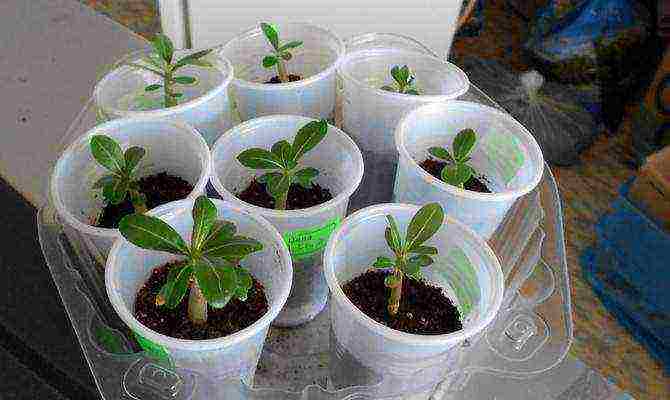
Seed-planted indoor flowers
Of course, if you urgently need to green a recently rebuilt or renovated cottage, or a new apartment after moving into it, you can give preference to adult indoor plants. And at the same time sow some crops to see them emerge from the seed. Actually, everything here depends on the type of flower, its exactingness to certain conditions. There are unpretentious ones that grow everywhere, on any windowsill, regardless of which side of the world the window is facing. But there are also many crops that will not take root in a new place if they were grown in different conditions. It is advisable to plant them only with seeds. In this case, it may be necessary to create additional conditions: curtains on windows, warming of frames, organization of drip irrigation, purchase of specialized soil.
Which crops are best planted with seeds - choose from among many
You can sow almost all indoor flowers, but some of them take root perfectly by layering, dividing, even just torn off leaves can form a root system. Therefore, in order not to sort out all existing plant species, we will selectively consider several of those that reproduce exclusively by seeds. These, for example, include the Persian cyclamen. Actually, it can also be planted with bulbs that originate at the base of the stem in the root system, but they do not always sprout, since they are very capricious to the state of the soil. The seeds of this plant are formed in a small box, from which it is convenient to extract them.
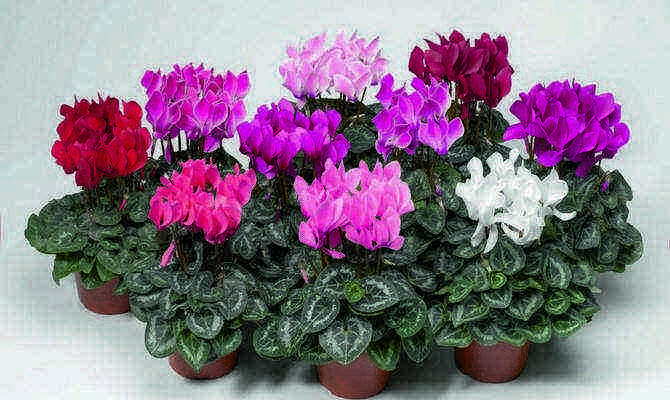
Cyclamen Persian
The ever-flowering begonia is very popular among flower growers, which, in fact, at room temperature and in a constant microclimate of the room, can bloom all year round. You can plant it with cuttings, but if you are not sure that such planting material is viable, it is better to use sowing. At the same time, there are quite a few different varieties, the smallest of which give bushes no more than 8 centimeters high, crowned with caps of rather large inflorescences, and the tallest grow up to 35 centimeters. It should be remembered that begonia seeds are extremely small, and therefore require special handling in preparation for sowing.
Schizanthus Feathered, which is also popularly known as the orchid of the poor, for its striking resemblance to this exotic flower, propagates exclusively by seeds. True, not all lovers of indoor crops may like the fact that schizanthus is an annual plant, which means that it requires an annual planting. However, if you choose a pot for him spacious enough, you can expect the emergence of new shoots next season from self-seeding. This indoor culture is good because it is very affordable and, when sown on seedlings, gives a good percentage of shoots. At the same time, it is better to give preference to undersized varieties that grow up to 30 centimeters. And what should be taken care of in advance is high-quality soil, saturated with organic matter and mineral elements, as well as drip irrigation.
Waller's balsam, which usually propagates either by cuttings or seeds, will be an excellent option for landscaping a residential area. But the first method is far from suitable for all varieties, very often the plantings turn out to be unviable and quickly die when trying to root them in a new place. Therefore, you need to collect the capsules before they are opened for self-seeding, and dry the seeds for storage until next season. The seed can lie for quite a long time, but after 4 years only 50% of the seeds will germinate, so it is undesirable to delay planting them. Most balsam varieties are tall and only suitable for the garden, but there are a few hybrids that grow into small bushes with compact buds.
They look very nice on the windowsills of primrose, especially Soft and Chinese.These are rather unpretentious plants that reproduce exclusively by seeds, and at home it is first necessary to carry out artificial cross-pollination. Moreover, they grow even in the shade, which allows them to be hung in pots at some distance from the windows. The only condition that must be observed is that the soil must be frequently moistened, otherwise these plants will quickly die. It is especially important to take this into account if the flowers will stand on the windowsill facing the sunny side of the house.
You should also decide on the basis of the rate of development of plants, since some crops grow faster, others much slower. Of the above, the smallest time for growth is necessary for balsam, and the ficus familiar to many, indoor pomegranate, can also quickly stretch. Cyclamens develop rather slowly. Brovallia, kufeya can also be ranked as slow-growing ones. As for storing seeds, it is not recommended to delay for a long time with planting indoor hibiscus and adeniums, since after a short time most of their seeds lose their germination.
How to properly prepare seeds for sowing - the first chores
Before planting flowers, you need to prepare them for sowing, especially if the material was bought in a store without special packaging, which is called “poured into a bag”. And first of all, it is imperative to disinfect the seeds, since they may contain bacteria that can spread after a while to neighboring crops, destroying previously recent plantings. To destroy harmful microorganisms, we use special preparations that can be bought in flower shops. There are also recipes for self-made disinfectants.
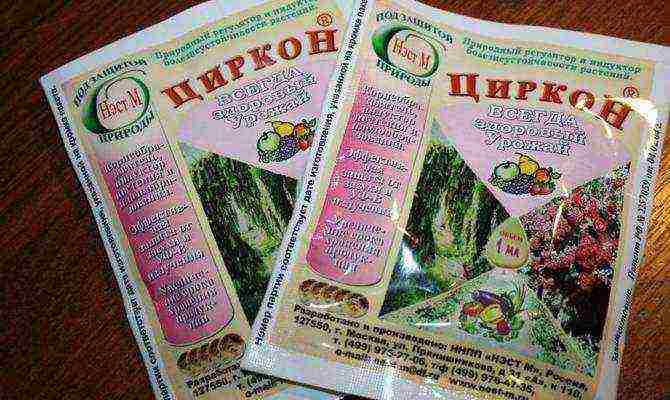
Zircon for seed disinfection
Of the purchased substances, Epin is the most popular, which must be used strictly according to the instructions. If there is none, then, according to the advice of flower growers, you need only 2 drops of the drug per 100 milliliters of water, and soak the seed in it for a period of 16 hours to a day. You can also use the phytohormone Zircon, which is enough for 1 drop per 150 milliliters, in which the seeds need to be kept for no more than 10-12 hours. Gummates of sodium or potassium have proven themselves well; a solution of 0.005 to 0.01% is made of them (respectively, 1 drop per 2 or 1 liter) to soak the seeds for 24 hours. Copper sulfate is also suitable for such a purpose, in its weak solution, no more than 1%, that is, 1 gram per 100 milliliters, the seeds are kept for no more than 10 minutes, otherwise the planting material will be destroyed.
You can hold the seeds in a 1% solution of potassium permanganate for up to 10-15 minutes, for which you need to measure 1 gram and stir it in 1 glass of water, or take a flat teaspoon and dissolve in 600 milliliters. From available tools, you can use aloe juice, it perfectly disinfects seeds, destroying bacteria. And you do not need to squeeze the fresh leaves, but keep them in the refrigerator for 5-6 days, then finely chop and grind. In the resulting gruel, the seed, previously wrapped in gauze, should be soaked. Another way is to use orange juice, freshly squeezed, in which the seeds are kept for at least 3 days.
After soaking in poisonous preparations, the inoculum should be washed in clean water for at least 30 minutes, after other solutions, light rinsing and short-term immersion in hydrogen peroxide are sufficient.
In addition to the above measures for disinfection, flower growers use other measures to prepare seeds for planting. Good results are obtained by bubbling, that is, saturating the seeds with oxygen. To do this, they are placed in a container with water, at the bottom of which an air atomizer put on a flexible tube from the aquarium compressor is lowered.Soaking is carried out for 10 hours, and during this time the device must work, saturating the water with oxygen. This accelerates seed germination after planting. Also, the hardening of the seed is often carried out by wrapping it in gauze soaked in a manganese solution and keeping it in the refrigerator for up to 2 days. If you purchased granulated seeds, that is, placed in special casings, they should not be processed.
When and how best to plant crops - floriculture basics
Unlike garden plants, flowers can be sown on the windowsill almost at any time of the year, if the necessary conditions are created with sufficient lighting, optimal temperature and humidity. However, some crops should be planted immediately after collecting seeds, which are not recommended for storage for a long time, in particular, this applies to all the same cyclamens. Therefore, most of the plantings are in February – March, and some are carried out in September – October. In winter, it is better to refrain from sowing, since the heating radiators from below heat the window sill, and the cold comes from the window glass.
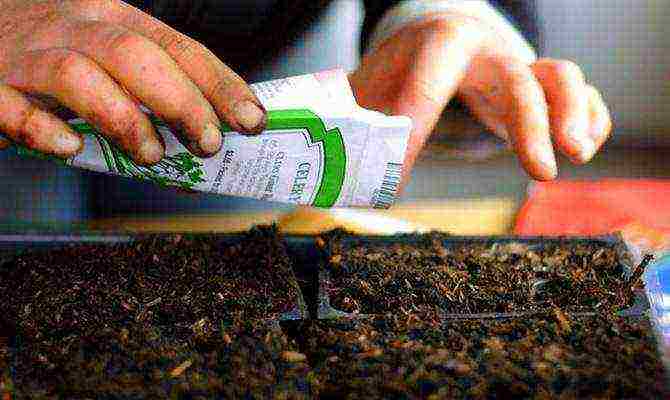
Planting seeds
For seeds, the most nutritious soil is best suited, preferably based on peat or humus, flower growers, for example, actively use peat tablets for germination. However, as a permanent soil for plants, this option is not suitable, therefore, for the seed, a special soil is needed only until the sprouts with a couple of leaves appear, then the seedlings should be transplanted. Be sure to first disinfect the ground, for which it is poured with boiling water, dried in the oven or soaked in a solution of potassium permanganate. We recommend pouring fine expanded clay on the bottom of the pot or box for drainage and air penetration into the soil, and first scald the material with boiling water.
Planting methods for all crops are individual, but in general, it is enough to sprinkle most of the seeds with well-crushed loose soil to a depth of 3 of their diameters. Some flowers need to be covered with glass and must be removed from direct sunlight, cyclamens germinate even better in the shade than in bright light. The smallest seeds must be mixed with sand for even sowing, for large ones, either separate holes or a groove are made, where they are laid with small intervals of about 3 centimeters. Florists recommend dropping a little water on granular seeds so that the shells dissolve in the soil.
Rate the article:
(0 votes, average: 0 out of 5)
Many people involved in the cultivation and breeding of indoor plants, prefer not to buy them in adulthood, but to germinate from seeds on their own.
This technique allows you to significantly save financial resources, since the planting material is quite cheap, and also to try to develop fundamentally new varieties. All the features of this process, as well as the types of plants suitable for such cultivation, will be discussed in detail in this article.
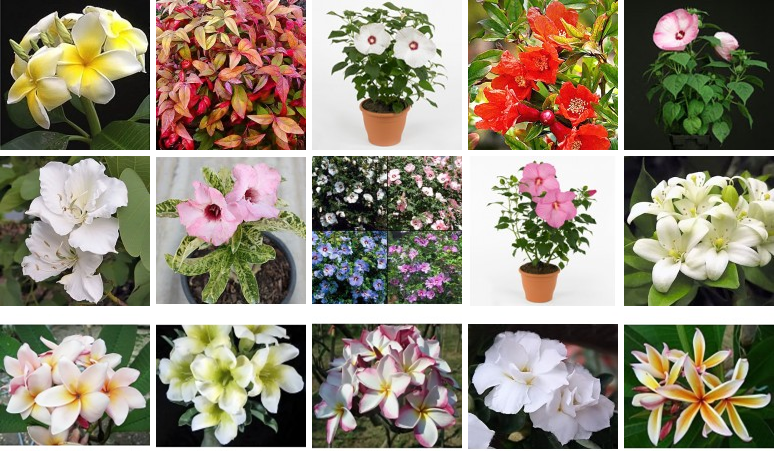
What indoor plants are best grown from seeds
Many varieties of indoor plants can be germinated from seeds, the most common options are briefly discussed below:
- Abutilon sometimes called indoor maple, it is a tropical plant with unusual leaves that give it a maple-like appearance. At home, it is able to grow up to almost 2 meters in height, the life expectancy is usually no more than 3 - 5 years, since then the plant loses its decorative effect.
- Balsam is an Asian plant that is distinguished by its lushness and dense vegetation.There are different varieties that have individual colors of both leaves and flowers. During the purchase, you need to be careful, since only indoor balsam is suitable for home cultivation.
- Periwinkle enjoys particular popularity due to its active and abundant flowering. Inflorescences can have a variety of colors: from white to bright pink and lilac tones, depending on the selected variety. The leaves are oval in shape, in the middle there is a characteristic colored speck.
- Begonia is an unpretentious houseplant that looks very much like a rose. To date, a large number of various varieties have been bred, differing from each other in color and structural features of the inflorescences.
- Brugmansia is a beautiful and powerful plant with very large inflorescences, but precautions must be taken when growing it, since all its parts are poisonous.
- Jasmine gardenia is a tropical plant that is popular for its unique delicate and double white inflorescences. They are perfectly combined with lush and neat foliage, which has a bright green color, so this flower will be a wonderful decoration for any room.
- Dracaena is a deciduous plant that is very often used to decorate offices, but many people grow it at home. The leaves are distinguished by their unusual shape and color, and the crown transforms over time and turns into a stem with a dense structure, which gives the dracaena some resemblance to a small tree.
- Camellia - this is a rather whimsical houseplant, but many growers still grow it, such popularity is explained by the unique aroma and attractive appearance of the inflorescences.
- Geranium has long been a popular indoor plant, the main feature of which is to grow in height, not in breadth. Today, there are various varieties that differ in color of flowers.
- Primrose well suited for lovers of violets, since it has an external resemblance to these indoor plants, but differs from them in unpretentiousness and easier care. Among the main advantages are early flowering and a variety of varieties that differ from each other in color. For home cultivation, a special indoor variety of primrose is used.
Features and rules for growing indoor plants from seeds
The features of such a cultivation of indoor plants depend on the specific variety chosen, since they all differ in environmental requirements and have different growth periods.
However, there are a number of general rules that apply to all flowers, which are listed below:
- The seeds are pre-soaked, for this they are wrapped in gauze or bandage, after which they are immersed in clean water and kept in it for about 2-3 days. In this case, it is necessary not to forget about replacing the water, it should be carried out at least once every 5-6 hours.
- There are plants for which an exception is made, since soaking is contraindicated in their seeds. These plants primarily include begonias and virtually all varieties of cacti.
- For the germination of seedlings and their full development, it is necessary to maintain a special microclimate, its features depend on the level of frost resistance of the selected variety. Tropical breeds require a stable maintenance of the temperature regime not lower than +28 - + 30 ° C, and less thermophilic varieties will have enough temperature of + 18 ° C.
- Formed seedlings, which already have 2 - 3 leaves, need to be planted in individual pots. There is no need to hesitate with this process, since they will interfere with the development of each other when they are in the same container.
When is the best time to sow
The timing of sowing seeds depends on the characteristics of the selected plant, but they can all be divided into certain groups, for which uniform planting rules will apply:
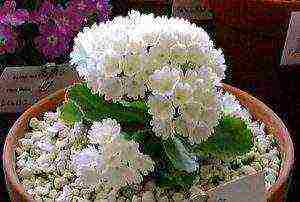
- Seeds that have a long germination period should be sown as early as possible, usually in January or early February. This rule applies to all varieties of palms, cyclamen, bauhinia, tamarind and most conifers.
- Seeds that germinate quickly enough can be planted in March and April, this applies to tamarind, large-flowered sesbania, hibiscus, antigonon and others. It is not recommended to practice early planting, since the first shoots will appear quickly enough and will immediately begin to experience a lack of lighting and heat, which will negatively affect their development and survival.
- Aquilegia and other varieties, which bloom quite early and quickly, can be planted in May.
In some situations, seeds can be sown at any other time of the year, but the cultivation technology will be much more complex. It will be necessary not only to create, but also to constantly maintain the conditions necessary for their growth and development.
When grown in the autumn or winter period, the organization of additional lighting is always required, which will consist in the installation of special phytolamps.
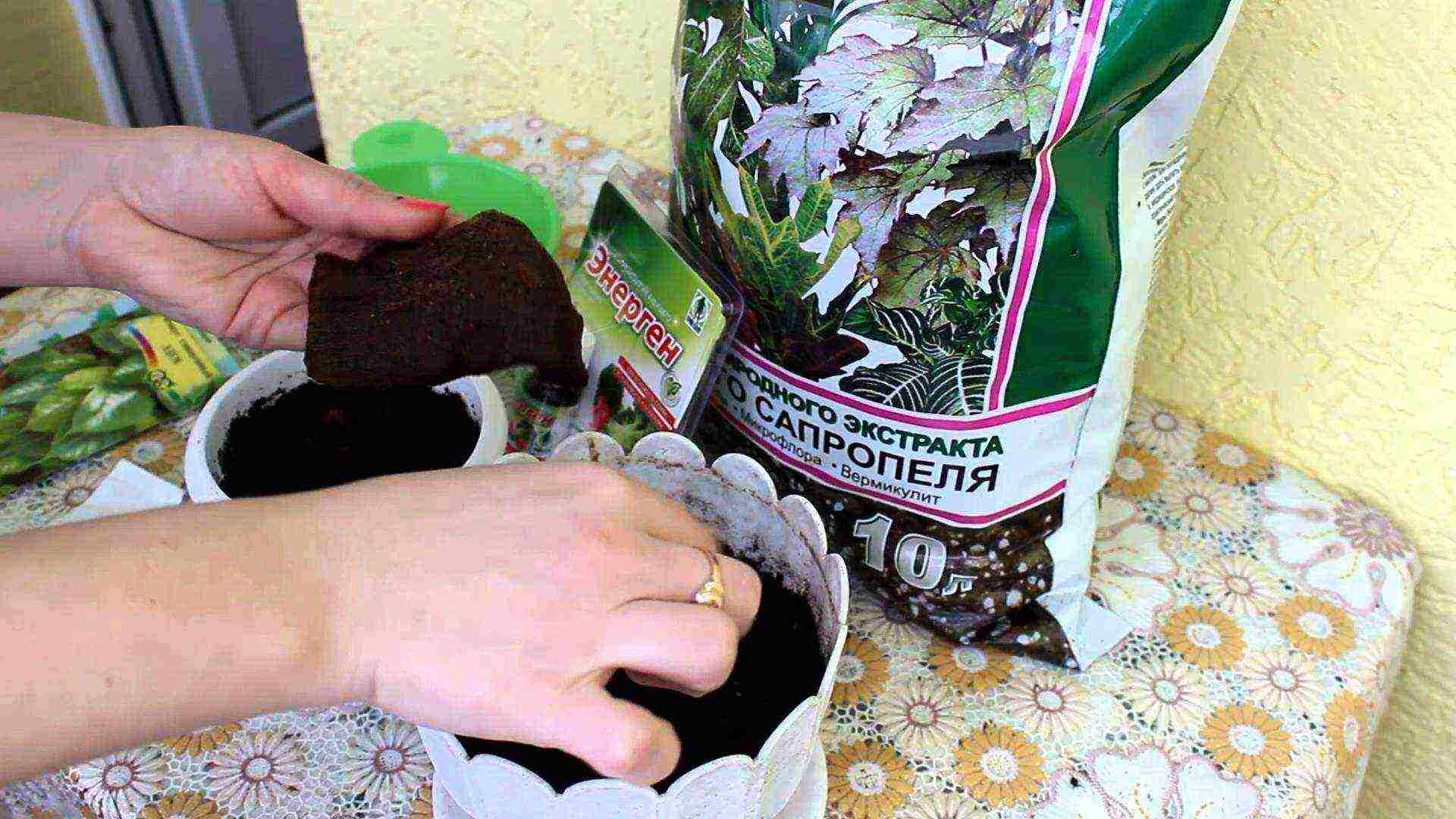
Preparing seeds for planting
Instant sowing of only purchased or harvested seeds is not allowed, since they must initially undergo preliminary preparation for this process.
Depending on the characteristics of the indoor plant variety being grown, the following procedures can be applied:
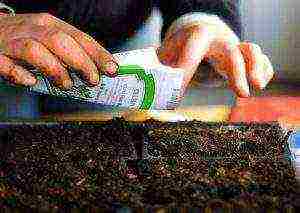
- Virtually all seeds need soaking. This process is aimed at increasing their moisture content, stimulating respiratory processes and ensuring the onset of growth. For these purposes, pre-boiled water is used, the recommended temperature is at least +25 - + 30 ° C. If seeds with a thick shell are used, then several days are allotted for the procedure with periodic water changes in order to achieve swelling of the planting material. Before sowing, the seeds must be thoroughly dried.
- Bubbling is a very effective preparation technique, which consists in placing the planting material in an artificially oxygen-enriched aquatic environment. To do this, the selected container is filled with clean water, after which a compressor is immersed in it, which is usually used for aquariums. The seeds are pre-wrapped in burlap or gauze, which does not impede the circulation of water. The volume of the container should be no more than a liter, otherwise the effectiveness of the procedure will be much lower.
- Pickling is a mandatory preparation step that must be carried out after soaking or bubbling. You can powder the planting material with dry fungicides or treat them with a solution of potassium permanganate 1%. All such manipulations should be carried out exclusively on the street or in a well-ventilated area, the seeds will be ready for planting after 2 days.
Procedures such as heating or hardening in most cases are practiced when planting fruitful crops, the seedlings of which are transplanted into open ground after a while; they do not need to be carried out for indoor plants.
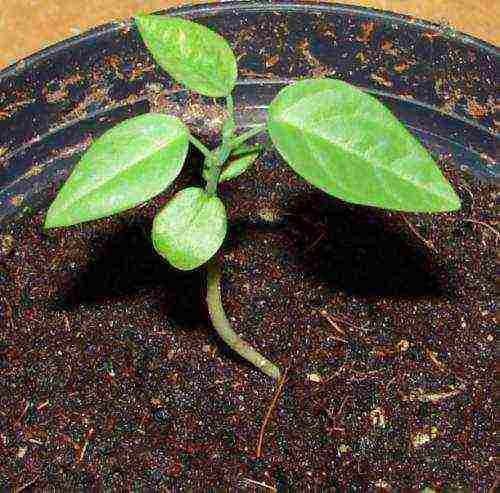
What soil to use
The choice of a suitable soil is another important process on which the likelihood of seedlings germination will depend.
Different plants have individual soil preferences, and the following general guidelines are recommended:
- For most indoor flowers, a standard substrate is suitable, which can be obtained by mixing equal amounts of peat and sand. Such a soil is considered favorable for the germination of virtually any seed.
- It is allowed to add vermiculite to the soil, but its volume should be no more than a quarter of the total amount of soil.
- Certain varieties can be germinated in pure vermiculite or river sand. There are no nutrients in such a soil, so this technique is mainly suitable for plants that easily tolerate transplanting.
Regardless of the type of soil chosen, it will first need to be disinfected. For this, the substrate is subjected to heat treatment, the easiest and most affordable way is to place it in an oven or microwave.
After that, it is recommended to let the soil settle for 2 - 3 months, this period will be enough for the reappearance of beneficial bacteria and the restoration of microflora.
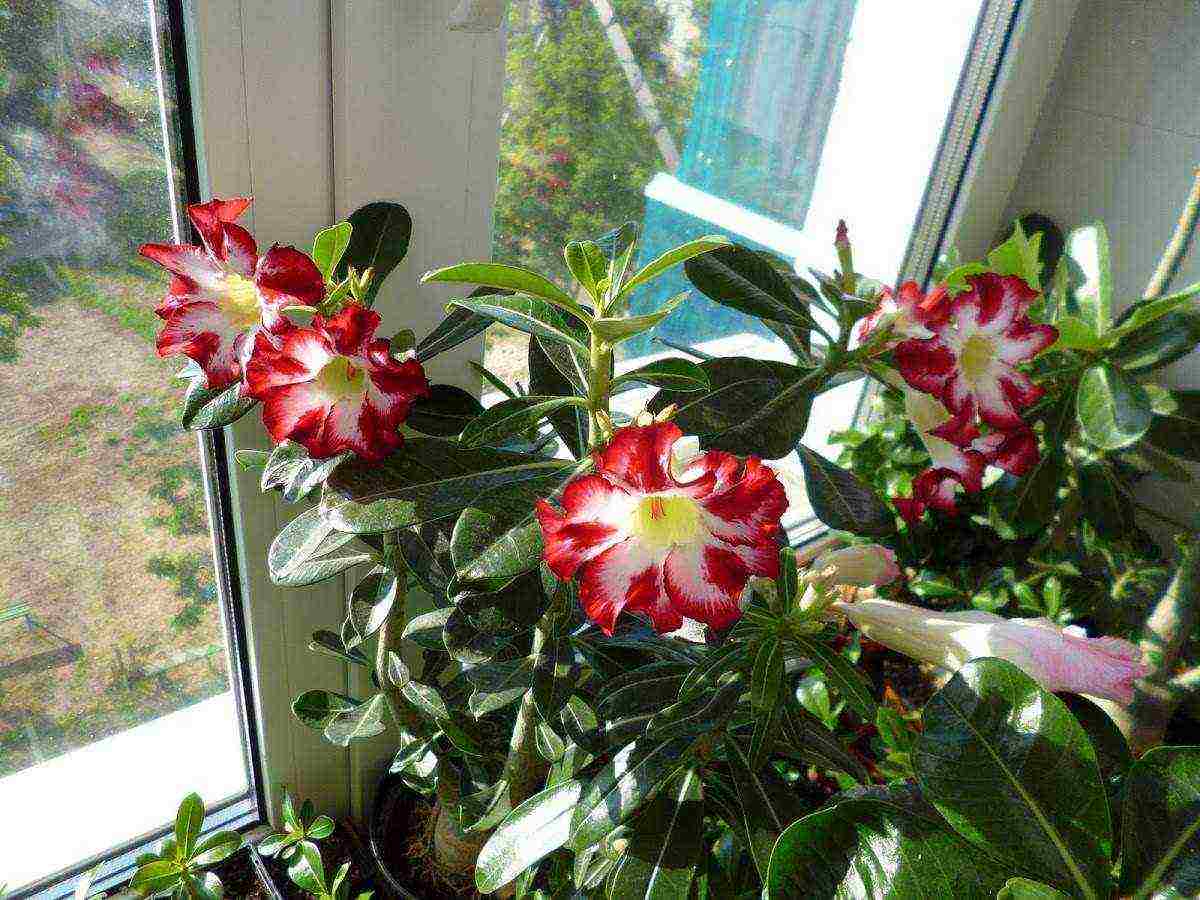
How to sow indoor flowers
Compliance with planting technology is also an important condition for the growth and development of seedlings that will be obtained from seeds. All the basic rules associated with this process are detailed below:
- Soil already placed in the containermust be pre-moistened.
- Small seeds do not need to be buried in the soil as this will minimize the chances of germination. It will be enough just to spread them on the surface of the earth.
- All planting material is laid out in even layersand then re-moistened with a spray bottle.
- The top of the container is covered with plastic wrap or glass, which will contribute to the preservation and maintenance of a sufficiently warm and humid microclimate.
- Watering will not be required until the first seedlings appearas the planting material can be fed by the resulting condensation.
- Medium-sized seeds are sown using a similar technology, but they need to be buried in the ground by about 1 - 2 mm.
- Large planting material should be buried in the ground by 1 - 2 cm.
- If the soil dries out after planting the seeds, it can be slightly moistened with a spray bottle. In this case, it is necessary to ensure that too much condensation does not form, as this will indicate an excessively high level of humidity inside.
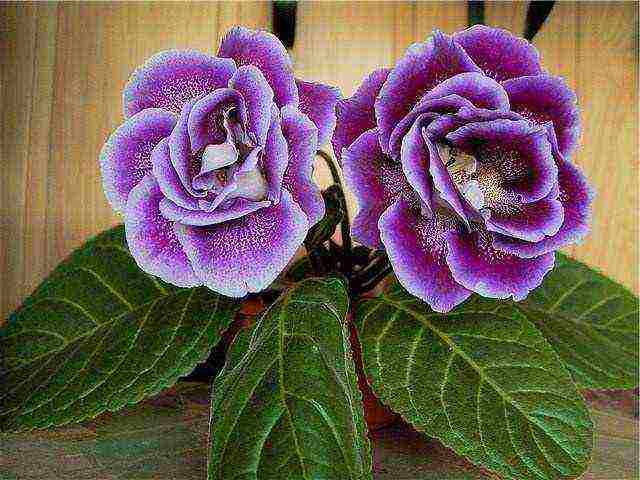
Major mistakes
The following are some of the most common mistakes that you can learn to help prevent recurrence when growing indoor plants from seed:
- Exposing seedlings to open sunlight immediately after transplanting into individual containers. Saplings need light and warmth, but for the first 2 - 3 days they are not yet ready for them, so young seedlings will need to be kept in some cool place for several days.
- Use for germination of seeds ready-made earthen mixtures purchased in the store. The only exception is purchased soil intended directly for seedlings, since other options have too high a concentration of nutrients, and this can suppress germination.
- The initial acquisition of plants that are too demanding, for which it is impossible to create the necessary comfortable conditions. All varieties have individual requirements for the level of lighting, degree of humidity, temperature, soil and other factors. You need to familiarize yourself with all the nuances before making a purchase to make sure that it is possible to provide the required conditions at home.
Florist tips
Summing up, you can give the following tips and advice from experienced florists:
- All seeds have an expiration date, so when making a purchase, you need to pay attention to it. Other important criteria are compliance with GOSTs and the reliability of the manufacturer, information about this must be indicated on the packaging.
- After planting the seeds and before the first shoots appear in the container, it is recommended not to open the container again, so as not to disturb the microclimate.An urgent need usually arises only in case of drying out of the soil, this usually indicates a violation of the planting technology.
- It is preliminarily recommended that you familiarize yourself with the photographs of the indoor flowers selected for growing in adult form., this will allow you to understand how well they will be in harmony with the overall design of the room.
Today, the choice of seeds is so great that everyone can try to grow an indoor flower, even an exotic one, which will harmonize with the interior and create coziness in your home. To trace how a tiny sprout develops from a small seed and becomes an adult full-fledged specimen, I advise you to read "which houseplants are grown from seeds."

Indoor flower seeds can be sown almost all year round, if the room is warm enough and there is enough lighting, if necessary, you will have to supplement it with fluorescent lamps. But the best time for sowing seeds on the eve of the growing season is February, March-April.
When propagated by seeds, everyone has a chance to grow the home flower of their dreams, to achieve the appearance of interesting shapes and colors. In most cases, we grow annuals from seeds (petunias, asters, nasturtiums, carnations ...), and then we plant them in open ground ... see "How to grow seedlings of garden flowers?"
How to get an indoor flower from seeds?
Hibiscus is a popular and demanded plant, moreover, it is successfully grown by seeds, sprout very quickly, literally on the fourth day, they also grow very quickly.
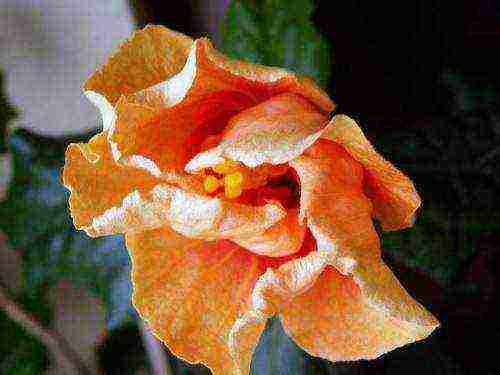
They start sowing from the end of February. Before sowing in separate containers, seeds of indoor hibiscus are soaked in warm water for 2-3 hours or germinated in a cloth napkin until roots appear. With sufficient development of the seedlings, several plants are planted in a container together. A quick and maximum decorative effect is achieved.
Large seeds of palm trees (trachycarpus, washingtonia, hamerops) germinate for a long time. In a month and a half, Washingtonia, a date palm, will rise, if it is possible to create a sufficiently high temperature (30-32 ° C). Trachikarpus, Livinston up to 4 months. There are specimens, the shoots of which will have to wait up to a year! When planting seedlings, you must not shorten the root and separate the seed!
Large seeds, which have a hard shell and are heavy-bodied, are pierced, cut, and filed slightly with a nail file before soaking. This is called scarification.
I had the experience of growing from Washingtonia palm seed. From two seeds, one sprang up. She grew up for a long time. The first leaves look like a young date, then after about a year the leaves began to grow in a fan. This plant has lived with me for seven or eight years. Over the years, it has grown only 7-8 fan leaves. For a year, she grew 3 leaves, and 2 died off. This rate of leaf emergence - one fan-shaped leaf per year - is permissible, even if the palm tree stands somewhere in the area of the north window. But unfortunately, something went wrong, the leaves began to turn yellow and the plant died.
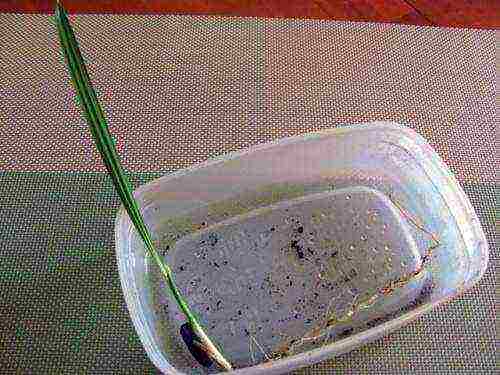
I grew a date from a stone several times, I did not go beyond 2-3 sprouts. The date is planted in one deep pot, because the root system needs a tall pot, and a small one is cramped. Let's see what happens next.
More than once I had to grow pelargonium from seeds. Very good germination, it grows quite quickly ... Coleuses, balsams, adeniums, abutilones germinate very quickly ...
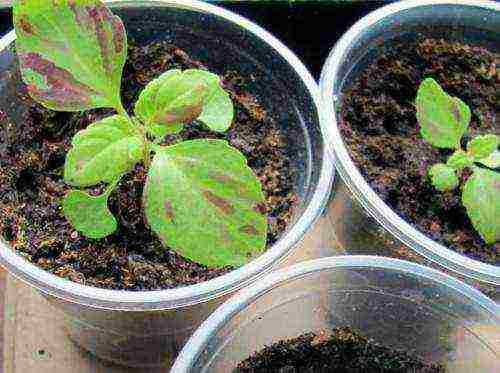
In the photo: Coleus planted many times (black dragon, various mixtures in green-brown tones), a lot has grown from seeds. They grow quickly, then you have to root the tops, look great as an annual, in summer they are planted in a flower bed.
It is easy to propagate by seed cacti (mixture or individual species), many succulents such as haworthia, stonecrop, jerky, cissus species. With successful sowing, a collection of interesting and maybe rare species of cacti is grown ...
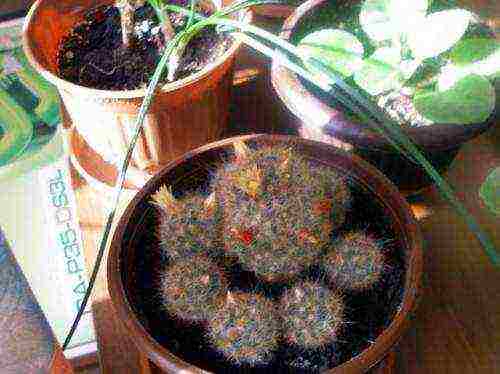
For most seeds of tropical plants, it is necessary to provide lighting 10 hours a day, a stable temperature (25-27 degrees), for less capricious ones (21-23 degrees), also moderate humidity, ventilation.
Growing cyclamen, all you need is to be patient for the first six months. It is recommended to sow in September-October. Fresh seeds are often eaten during this time. But you can do this all year round, it is enough to create the necessary conditions for them. Before sowing, the seeds are soaked in warm water or growth stimulant solution for up to 12-16 hours. On average, the time from sowing to germination ranges from 1 to 3 months.
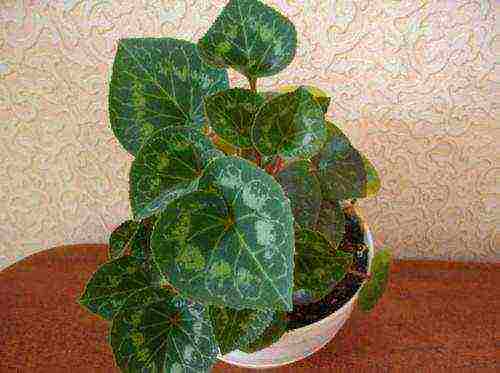
Cyclamens from seeds grow more adapted to life in our apartments.
When kept cool, cyclamens emerge faster, after 4 weeks, at temperatures between + 10 ° C ... + 12 ° C. At higher temperatures, germinate after 8 weeks and later. When the seed germinates, a root with a tiny nodule first develops, after rooting, a loop with a leaf unfolds. With a sufficiently high humidity, the seedlings themselves get rid of the seed peel. Avoid drying out, moisture should be moderate. Closed containers with crops are periodically ventilated.
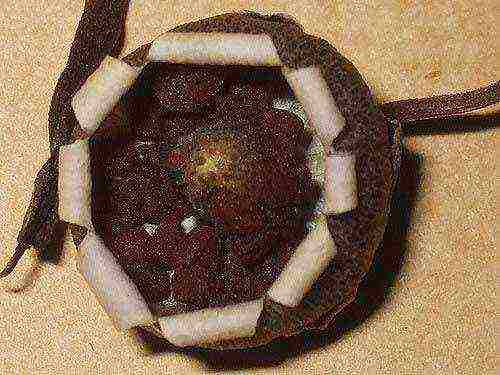
Ripe seeds are shaken out of the fruit-box and dried for several days, then sown.
If there is an adult flowering specimen at home, I propose to carry out artificial pollination. It is good if there are flowers from different plants. By clicking on the peduncle, shake off the pollen from one flower onto the paper and dip the pistil of another in this pollen. The procedure should be carried out for several days in a row, early in the morning on a clear day. After the cyclamen has faded, the fruit-box will appear.
Which plants reproduce by seed?
- Rapidly developing: asparagus, adenium, abutilon (indoor maple), balsams, hibiscus, indoor pomegranate, murraya, nightshade, pelargonium, passionflower, pachypodium, catharanthus, coleus, sacred ficus, shefflera,
- Slow growing plants: cyclamen, nolina, takka, brovallia, kufeya.
- Seeds that quickly lose germination: coffee, murraya, hippeastrum, hibiscus, gardenia, adenium ...
- We grow indoor balsams, begonias, gardenias, gerberas, gloxinias, jacaranda, camellias, cacti, succulents, streptocarpus, lithops (living stones), strelitzia, palm trees (washingtonia), decorative peppers, primroses, bluebells, chrysanthemums, and cineraria from seeds a lot others.
- Try planting seeds taken from ripe tropical fruits: avocado, date palm, pomegranate, mango, papaya, citrus fruits such as pitted lemon.
Do I need to process houseplant seeds?
The manufacturer, before putting the seeds in a bag, carries out a treatment that improves their properties. If something needs to be done with the seeds at home, then they write about it on the package. Granulated (pelleted) seeds are not processed!
Ordinary seeds with a dense shell, if necessary, are advised to warm up, hold in a very warm solution of potassium permanganate (12-16 hours), in solutions of boric acid, hydrogen peroxide for 15-20 minutes with mandatory washing in clean water.
Before sowing, they are soaked in solutions of a growth enhancer: epin, zircon, humates (potassium or sodium) for up to 12 hours. The thicker the casing, the longer it takes to soak. The seed coat is saturated with oxygen and moisture, which, in turn, gives a good impetus to germination.
Contrasting soaks in alternating cold and hot water stimulate hard-to-germinate or stale seeds.
Stratification - stress exposure to cold, hardening of seeds, at a temperature of + 2 + 5 degrees, if necessary for a given species. The stratification time is from a week to three months. Put the seeds on a damp cloth and put them in a bag (or mix with wet sand in a bag), put them in the refrigerator for 2-3 days. The fabric must remain damp. Then they begin to sow immediately or process them additionally in other ways.
Most domestic plants are tropical and subtropical species, so seed stratification is rarely used.


